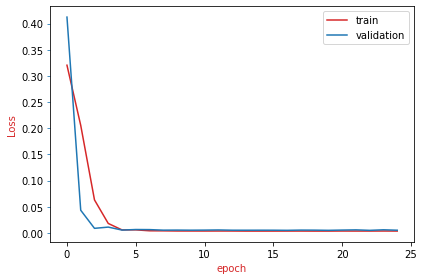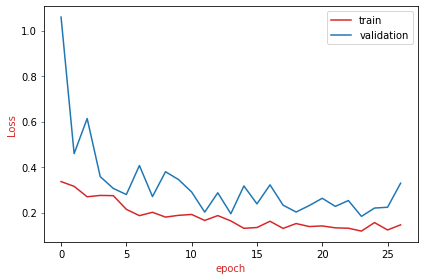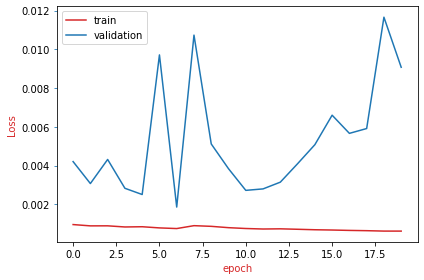Overview
In this assignment, I train a neural network model to automatically detect facial keypoints using PyTorch as the deep learning framework and google colab to make use of gpu.
Part 1 : Nose Tip Detection
For the first part, using data from this website I trained a simple Convolutional Neural Network that finds the nose of given facial images. The input of the model is 80 X 60 sized grayscale images of which pixel values are normalized in range -0.5 to 0.5. Here are some of the sample images with their nose tips plotted.

The architecture of the CNN model trained for this part is the following :
The model was trained with Adam optimizer with learning rate if 1e-2 for 25 epochs. Here is the plot of the training/validation losses for each epoch. The criterion of the losses is MSELoss, the L2 distance between the actual nose tips and the predicted nose tips.

Here are some of the predictions made by the trained model compared with the ground truths. The ground truths are plotted as green and the predictions are plotted in red.

Notice that the two left iamges are relatively well predicted, whereas the right two are not. Possible reason behind the difference is the orientations of the faces.
Part 2 : Full Facial Keypoints Detection
Now, I will move on to training the whole key points of the faces. For better training, I augmented data through randomly rotating and shifting the given images. Also, I trained a bit more complex and heavier model.
Here are some examples of the transformed images with their key points plotted in red.

The architecture of the bigger CNN model trained for this part is the following : Here I used more stacks of convolutional layers. Also, I added BatchNorm Layers after convolutional and linear layers. Last but not least, I used PReLU instead of ReLu as activation functions.
The model was trained for 35 epochs with Adam optimizer with learning rate of 1e-2. Here is the graph of training/validation losses per epoch.

Here are some of the predictions made by the trained model compared with the ground truths. The ground truths are plotted as green and the predictions are plotted in red.

Notice that the 4th and 5th images have better aligned keypoints than the others. I guess this is due to the fact that the other images are more rotated and have faces facing sides, making them more apart from the mean face.
Here is a visualization of the first and the last convolution layers of the trained model. I tried to print out more for other layers but it seems that there are so many outputs to be returned for the latter layers.


Part 3 : Train With Larger Dataset
For this part, I trained a better facial key point detector using a larger dataset, specifically the ibug face in the wild dataset for training a facial keypoints detector. Here, I did not built a model from scratch but rather made use of a pretrained model, namely resnet18. I made slight modifications to its last layers so that the dimensions of its outputs match to the targets. Also, I freezed the layers except the last few.
The model was strained with Adam optimizer with learning rate of 1e-3. The following is the graph of training/validation loss.

Here are some of the sample predictions for Kaggle images.

The score I got for the Kaggle competition is 351.86020... (Still working on it to improve...)
Here are some key points predictions on pictures I picked. (A little disappoinintg result...)
